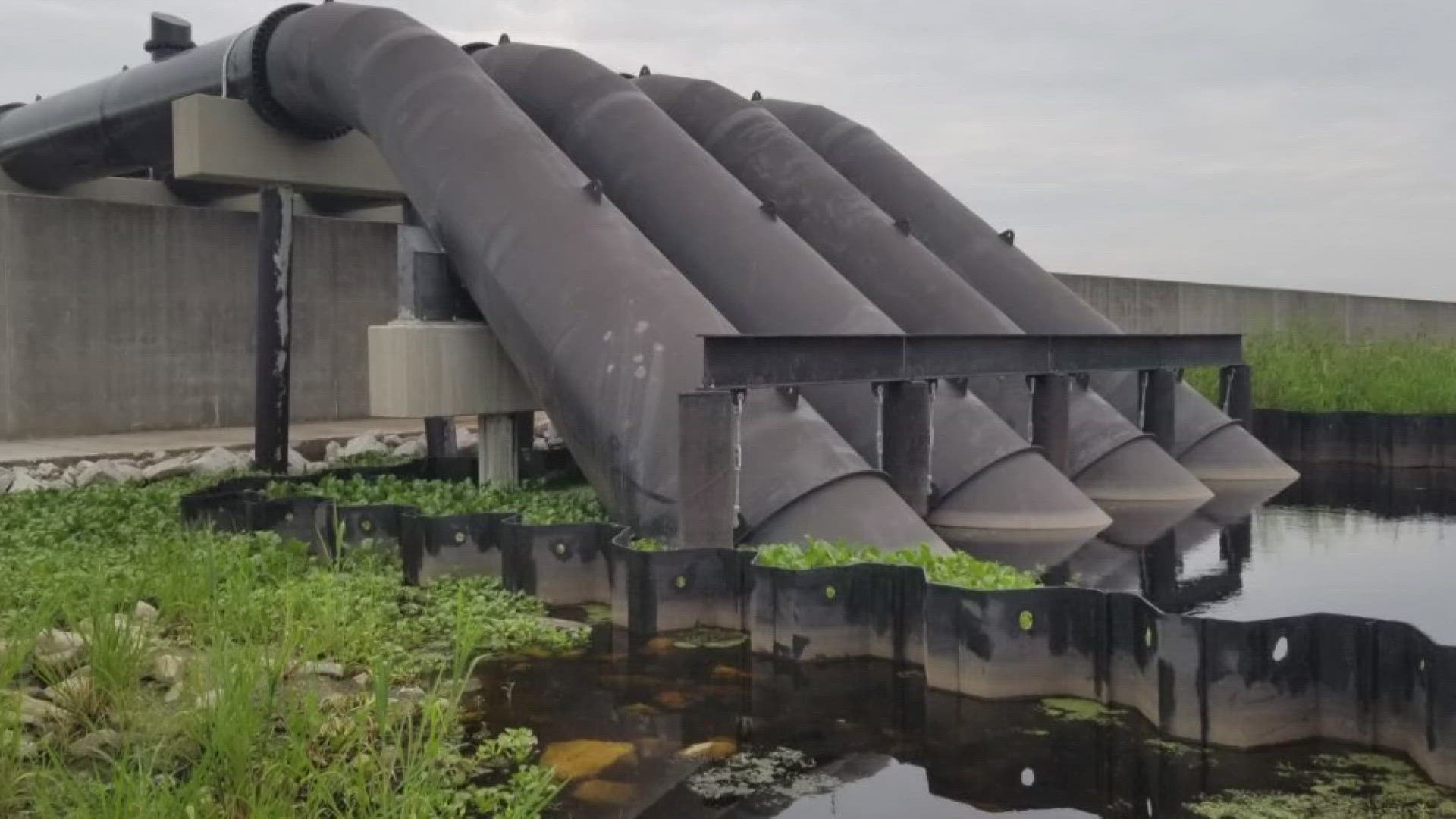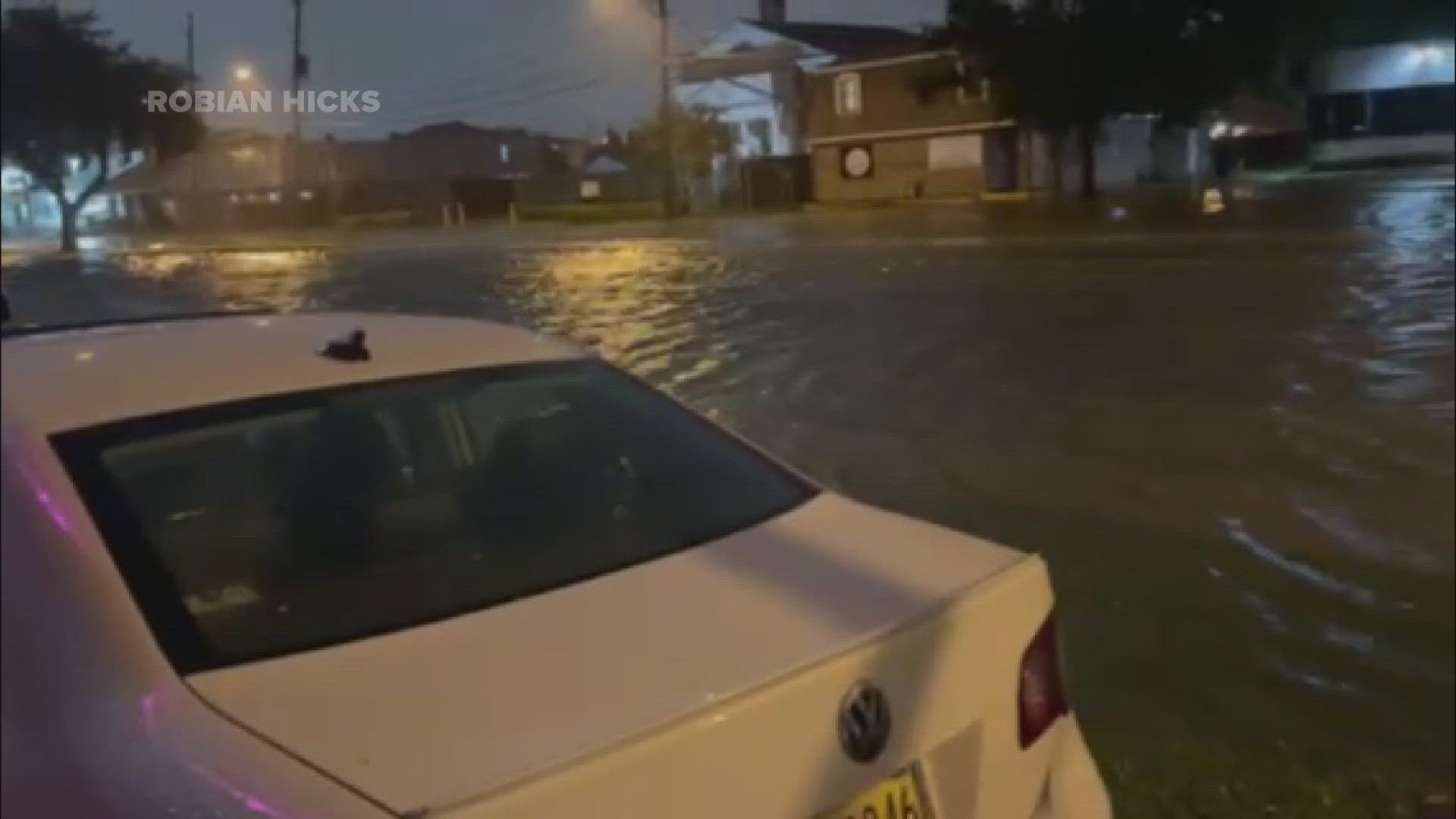NEW ORLEANS — The drainage system operated by the New Orleans Sewerage and Water Board relies on century-old equipment, outdated power sources, and long-standing maintenance problems.
As a result, flooding in the city after a heavy rain, much less a hurricane, is almost accepted as a peril of living in New Orleans.
But with Hurricane Francine, it was Jefferson Parish's much more modern system that got overwhelmed, with wide swaths of the East Bank experiencing street flooding. The worst of it was in Kenner, which saw the inundation of homes and businesses.
“For us, Francine ended up being a heavy rain event which caused street flooding. A lot of street flooding,” said Parish President Cynthia Lee Sheng at a post-storm briefing Thursday.
Sheng said the biggest culprit was Mother Nature.
“The best way to put it, we were just outpaced by the sheer amount and volume of water that Hurricane Francine dumped on us,” she said. “For the East Bank, we experienced an average of seven to nine inches of rain, some areas getting a dozen inches of rain.”
Sheng noted that the heavy precipitation totals came after a string of rainy days that left the ground saturated and canals full.
But beyond the natural factors, a deeper analysis shows that the worst of the flooding in Kenner was made worse by breakdowns in equipment not controlled by the parish, but by Armstrong International Airport.
Jefferson Parish Public Works Director Mark Drewes said his department has regular communication with the airport during heavy rain events and their problems Wednesday were obvious.
“We knew they were having troubles,” Drewes said. “They were starting their pumps, running for 10 minutes, down for half an hour. They did that multiple times. So we called them and just, look, we see you're having problems, is there anything we can do? They said, ‘We're working the best we can.’ ”
Drewes explained that three out of the four airport pumps failed at the peak of the storm.
On top of that, two additional Kenner pumps controlled by the parish also had mechanical issues that needed on-the-spot repairs just as the parish went into overdrive trying to drain standing floodwaters.
“We had some issues with pumps. And what that did, it delayed us being able to drain Kenner. Other portions of the parish were coming down before Kenner,” Drewes said.
Airport spokeswoman Erin Burns wrote in an email that the airport’s four automated pumps are located on the northwest corner of the vast property. She stated that experts are still trying to pinpoint what caused the glitch, but noted that “the airport experienced an unprecedented record total of 7.23 inches of rainfall
Within a short amount of time, which is higher than any other hurricane event.”
Burns wrote that three of the pumps “were experiencing stops and starts that prevented individual pumps from operating for a waiting period. The wait period is a safety measure built into the automated system to protect the pumps.”
She added that the “airport is conducting a thorough investigation to determine the root cause of the issues at the pump station so they can be properly addressed.”
► Get breaking news from your neighborhood delivered directly to you by downloading the new FREE WWL-TV News app now in the IOS App Store or Google Play.


